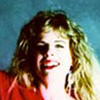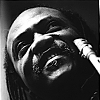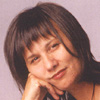 |
Kitty Brazelton Composer/Vocalist “…I may start with the same message but I don’t say it the same – to different people or in different environments…” |
 |
Nick Didkovsky Composer/Guitarist “…It’s best when the audience is working as hard as we are to make the event happen…” |
 |
Oliver Lake Composer/Saxophonist “…The main thing is that I play honestly and from my heart, and I feel that the audience will recognize this, regardless of who they are…” |
 |
Mary LaRose Vocalist “…Different venues create unique situations in music…” |
 |
Fred Hersch Pianist “When I play solo, I prefer a concert hall…” |
Does The Place Make The Space? Clubs, Recordings and Audiences and Their Impact on Jazz
 Frank J. Oteri Photo by Melissa Richard |
On special occasions I take people on tours of historic bars in New York City. The rule is that we won’t go into a place unless it was open before Prohibition and remained open during Prohibition and ever since. In one evening, we are usually able to stop at four or five places, leaving plenty of other locations unvisited. I’ve attempted similar excursions in San Francisco, Chicago, Boston and New Orleans.
Would that a similar tour could be made of historic concert venues for American music in any of these cities! Unfortunately, performances of American repertoire are not frequent occurances at our most historic halls for classical music such as New York’s Carnegie Hall, Boston’s Jordan Hall, Philadelphia’s Academy of Music, etc. While other American musical genres have important halls, e.g. country music has the Ryman and the Grand Ole Opry, the development of jazz, a musical genre born on our soil, is directly connected to the clubs it was played in, several of which are still standing and are still open for business. While cities like Kansas City and St. Louis have bulldozed their historic downtowns, destroying all the legendary jazz clubs that were once there, cities ranging from New York to Detroit to New Orleans maintain important sonic shrines. We asked Lara Pellegrinelli to provide us with a guided tour in her hyperhistory filled with RealAudio clips of music recorded live in some of America’s most important jazz clubs.
The whole notion of doing such a hyperhistory was initially inspired by a comment I heard Don Byron make from the stage of the old Knitting Factory several years ago. He claimed that he liked playing there because he felt free to play whatever he wanted. We brought Don Byron in to talk about venues, audience expectations, recordings and many other things that have had an impact on his music which is extensively featured in RealAudio clips sprinked throughout the interview. We asked Oliver Lake, Fred Hersch, Kitty Brazelton, Mary LaRose and Nick Didkovsky how where they play affects what they play. And we ask you to tell us your ideal space for listening to music.
Hear&Now offers information on concerts in all sorts of venues around the country. But if you’d rather stay home and listen to music, our first SoundTracks for the year 2000 features recordings exclusively issued in 1999. A great deal of the music you’ll hear on them sounds nothing like the past; listen to the RealAudio samples and you’ll hear what I mean.
Finally, we begin the new year with both sad and joyous news. We mourn the passing of K. Robert Schwarz, a music critic dedicated to promoting and explicating new American music. And we celebrate being among the winners of the 1999 ASCAP-Deems Taylor Awards.
Soundtracks: January 2000
For our first compendium of new American music CDs of the millennium, of course, we’re continuing to feature discs that were recorded in the last millennium! But in the coming months we will soon find out that like so many other terms that need to be re-examined, the appellation “20th century music” no longer suffices to describe new American music.
Several of the discs covered in this issue are so unlike most of the music you’ve heard before that they could very well be considered a harbinger of 21st century music. Nothing has quite prepared us for Al Margolis’s assemblage of 106,476 clarinets, or Tom Johnson’s sonic encyclopedia of every possible piano chord in 12-tone equal temperament. And James Tenney’s music for violin and piano, some of it several decades old, still sounds years ahead of its time. Tenney is also featured on a remarkable new disc by Sonic Youth, arguably the most important American rock band of the past two decades. The album, fittingly titled Goodbye 20th Century, features performances of experimental works by 10 composers of the second half of the 20th century, 9 of whom are Americans, which must be a first in both the history of rock and the history of so-called concert music.
The music of Jerry Gerber posits an orchestra-less future for orchestral music, using programmable synthesizers to convey symphonic sonorities. Although another disc featuring new works by Robert Starer and William Thomas McKinley shows that the orchestra is still very much alive.
Indeed, there will be many musical carryovers from the previous century. And as the post-romantic orchestral music of John Stewart McLennan, the quasi-impressionistic piano music of Alvin Curran and the often mystical music of Stephen Dickman suggest, we are part of a musical continuum that goes much further back in time and that encompasses a world-wide geography.
It’s fitting that for the first issue of NewMusicBox where jazz takes central stage, there are a plethora of interesting new jazz releases. The latest small combo releases by saxophonist Jimmy Greene and trumpet genius Dave Douglas, offer new sets of compositions that are firmly in the jazz tradition, while the larger ensemble outings by master arranger Don Sebesky and legendary congero Ray Barretto put new spins on some classic charts by Ellington and others. An Ellington tune also appears on the latest CD by Don Byron, who appears in this month’s In The First Person. Finally, Ellington’s own interpretations of his music are featured on a never-before released live concert recording of the under-appreciated 1954 line-up of his orchestra, which is particularly fitting in an issue of NewMusicBox devoted to the impact of concert venues on musical performance and should serve as a reminder to today’s record industry that some of the best jazz recordings have been the ones that are not manufactured in the studio.
America’s Most Fascinating Jazz Clubs
|
One minute, you’re just sitting around in some dark, dank, tiny, crowded, smoke-filled basement room with a drink in your hand; the next, you’re intently focused, completely absorbed, magically transported into the light of improvisation. That, in a nutshell, is the power of jazz, a power which moves listeners and can alter the experience of time and space.
Of course, the equation which fires up the transporter beam and determines the eventual warp factor contains many variables: artist, audience, and there’s always that choice of beverage. Certainly, venue has its place among these. Often, the best spaces have mystical properties, vibes, personalities distinctly their own. They may reflect the physical space or neighborhood surroundings; the weight of historical events which have taken place there or the owner’s personality. The greatest clubs, like the musicians who perform in them, are iconoclastic. They take on lives of their own.
When we think about jazz clubs, the stereotypic image that springs to mind is that of the smokey little room cloaked in darkness. Surprisingly few clubs of this ilk still exist across the country. Even fewer manage to book anything other than local talent. Many reasons account for their current struggle to stay alive: people have a wider range of entertainment options competing for their attention than ever before; Americans drink and smoke less than they did in past decades and drink sales were the lifeblood of most club revenue; and jazz comprises an extremely small market share within the music industry generally speaking. For CD sales, it’s only about 3 percent.
In the last decade or so, dozens of clubs have shut their doors: New York’s Bradley’s, the Village Gate, and Fat Tuesday’s; Boston’s Connolly’s; Baltimore’s The Sphinx Club; various establishments in Memphis owned by Andrew “Sunbeam” Mitchell (d. 1989) including Mitchell’s Hotel; Detroit’s Blue Bird Inn; and Portland, Oregon’s Hobbit, to name a few. Some, like the Royal Peacock in Atlanta and the famed Lighthouse Cafe in Hermosa Beach, California, only present jazz occasionally.
A few vintage venues still exist, beating the odds, even thriving on the integrity of their bookings and a certain American predilection for “authenticity.” Chicago’s Green Mill (1910), perhaps the oldest club in the U.S. to continuously present music, was once a hangout for the notorious gangster Al Capone. It’s retained a period flavor and now hosts Chicago’s top talent, some nationally-known artists. The Village Vanguard was and continues to be New York’s shrine to jazz heavyweights past and present, from Thelonious Monk to Wynton Marsalis. Baker’s Keyboard Lounge in Detroit, an establishment which has periodically shut down in recent years, falls in the category of piano and organ bars of which there are a dwindling number. Some other clubs which maintain the same vibes as decades past are the St. Nicholaus Pub and the Lenox Lounge in Harlem; Ortlieb’s Jazz Haus and the Clef Club in Philadelphia.
Among its numerous applications, social Darwinism works for jazz clubs as well. Rather than become extinct, venues have adapted to the changing times and their customers’ changing needs. Preservation Hall in New Orleans was perhaps the first in a new breed of jazz club. Devoid of smoke and drink, the venue’s primary mission has been to preserve New Orleans-style jazz, one it’s upheld since the early 1960s. Instead of hiring more expensive talent, Boston’s Wally’s has evolved as largely a student venue where yet undiscovered Berklee students test their mettle. Tonic, a relative newcomer to the New York scene, has expanded traditional club offerings to include its own festival, a klezmer brunch, a film series, a songwriter series, and an open forum for discussion on various topics. The Jazz Bakery, in the Los Angeles area, is perhaps the only non-profit jazz club and presents the music in something akin to a concert setting.
On the opposite end of the spectrum is New York’s Blue Note. In an almost Disney-fied atmosphere, they present jazz as part of a tourist industry and have created franchises in other cities. Much of their business comes from food sales, as it does at Seattle’s Jazz Alley. Restaurant clubs like The Jazz Standard and Birdland in New York, Yoshi’s in San Francisco, the Catalina Bar and Grill in Hollywood, and Blues Alley in Washington DC seem to be the new standard. Happy marriages also exist between jazz clubs and hotels, which eliminates the cost of rent – Boston’s Scullers, Cambridge’s Regattabar, and New Orleans’ Horizons being prime examples.
The times they are a-changin’ and with them the American jazz club. Yet, in the best case scenario, the more things change, the more they stay the same. Even with the range in types of venues, what they present, and their continual evolution – on an individual basis as well as in general – having a unique vision, serving artists and communities will always form the basis for long-term success.
How does the venue and the audience affect the music you play? Kitty Brazelton
|
Performance is dialogue. So every performance must be different. I may start with the same message but I don’t say it the same – to different people or in different environments. And I expect the same skill in flexibility from my musicians. “Listen” to the room, its shape, its attitude, and the ears and minds you’re playing for. Assume nothing. Don’t hide within the intention of your composition – it’s just a starting place, no more.
Recording is making a self-contained conversation. It will become a conversation but you don’t know who will be on the other end and when, how or where they will be listening. So you better think about what you have to say and make it balanced in shape, complete in detail, and as passionate as possible, so it can live on without you. Recording is more like painting, less of a time art, than live performance.
How does the venue and the audience affect the music you play? Nick Didkovsky
|
The venues I perform in do not affect the set list I put together for my band, Doctor Nerve. I usually do that on the train on the way to the venue. If we make last minute changes, it’s usually due to a management request like, “We’d prefer two sets instead of one, so we can sell drinks.” As for the performance itself, it can be pushed a number of directions based on a lot of environmental factors, including the space itself. We played under the Brooklyn Bridge, in the anchorage spaces there, for example. Acoustically it was a disaster, but musically it was extremely inspiring. I think I react more to the vibe of a place than the acoustics.
Audience reaction is definitely an influence on how we play. A polite, quiet audience, for example, is not a neutral audience; it can be detrimental to the energy on stage. It’s best when the audience is working as hard as we are to make the event happen. Especially when we improvise, the audience can be very present in the performance.
Recording is a radically different experience than performing live. The realtime experience is necessarily different than an experience where you have non-time-based control over content. The music we make in 60 minutes on stage takes exactly 60 minutes. The same amount of music made in the studio can take hours, days, weeks…
The biggest problem I have with concert halls is looking off the stage at the audience, and my eyes have to cross a vast gulf before I can barely make out shadowy faces in the distance. That’s not a lot of fun. With the Fred Frith Guitar Quartet, at one point I suggested we turn the house lights up for the second set. Audience loved it. Everyone had a much better time. We play for people, not shadows.
How does the venue and the audience affect the music you play? Oliver Lake
|
It’s very difficult to describe the effect that different venues have on my performances. Certain audiences have different energies. Often the audience becomes a part of the performance and that can affect the performance in different ways. The more intimate, the better.
I primarily play for myself and hope that the audience loves it. It is very difficult to second guess an audience. The main thing is that I play honestly and from my heart, and I feel that the audience will recognize this, regardless of who they are.
Do you play differently in the studio vs. a live performance? I try not to play differently for studio recordings and live audiences, but the environment does have an effect on the playing. I prefer to play in an intimate setting with many people. (This is not easily done, but this is the ideal setting.) My main goal is honest communication. I hope to accomplish this regardless of the environment.
How does the venue and the audience affect the music you play? Mary LaRose
|
Of course, I am affected by my listeners, but the band always depends on each other first for being it’s own audience, and then from there it goes out to involve. Different venues create unique situations in music. Performing in the studio is unnatural since music is meant to be received at a given moment. To preserve the spontaneity of my sessions, I did minimal overdubs and fixes, though it is very tempting to want to make a “perfect recording”. On live gigs, the music evolves naturally and as it becomes more integrated into the band, it changes – I always like where it goes more and love how it keeps taking on new directions.
“Does place make the space?” I say, it pushes and pulls it into different and interesting shapes.
How does the venue and the audience affect the music you play? Fred Hersch
|
When I play solo, I prefer a concert hall (non sound system!). Since I don’t have other musicians to interact with (and since my programs are largely improvised), the three things that affect my performance the most are (in order of importance):
- the piano itself (the tone of the instrument and feel of the action)
- the acoustics (I react to the acoustics and “use the hall”–or be done in by them)
- the audience (yes, love from across the footlights is a good thing…)
In other words…dead piano and dead acoustics = I’m toast! I always prefer to control bright pianos and bright acoustics rather than trying to “get blood out of a stone” in a dead situation…except….
When i’m playing with a rhythm section. Concert hall stages can be very difficult if a presenter doesn’t provide a shell for us to play in (i.e. create a more intimate space on the stage for us so we can play “chamber music style” to each other) – and if we have to be dependent on stage monitors to hear each other (which also means being dependent on a sound system and a sympathetic, intelligent and competent sound engineer). So for a trio situation, I prefer a club or a more controlled acoustic environment (that’s not to say totally dead either).
- solo piano: Jordan Hall, Boston; Herbst Theatre, San Francisco
- jazz trio: Village Vanguard, NYC; Bach Dancing and Dynamite Society, Half Moon Bay CA
- favorite all-around concert hall: Town Hall, NYC (stage sound is great, isn’t too deep or high so the sound really gets out into the audience instead of swimming around on stage, great sight lines for audience)
To conclude: the venue makes a difference. Some places just seem to have “the vibe” and have more inherent music-making possibilities than others…
“Some People Think He’s God”: Ken Smith Remembers Paul Bowles
Although he was a success as both composer and author, as a recluse Paul Bowles was a total failure. After fleeing New York for Morocco in 1947, he and his wife Jane continued to entertain a seemingly endless parade of visitors in his adopted country. Even in the 1990s, after Betolucci’s film of The Sheltering Sky had made him America’s most famous living expatriate, finding him was still as easy as picking up the Tangier telephone book.
I had discovered his work only in the mid-’80s, when within the course of a week I read an essay by Gore Vidal claiming Bowles’s stories as being “among the best ever written by an American” and an unrelated piece by Ned Rorem predicting that “if history remembers [Bowles] it will be for his musical gifts.” The two sides of Bowles’s creative life seem to occupy mutually distinct realms-the music existing to charm, the text trying to horrify-but it was the area in-between than I came to find the most intriguing.
As a regular music critic at the New York Herald-Tribune from 1942 to 1946, Bowles upheld the mantle of Virgil Thomson, and was Thomson’s own choice to replace him as chief critic when he left the paper in 1954. In retrospect, Bowles proved a subversive choice. Entrusted with documenting “serious” music in the city, he became the first critic to devote any serious space to jazz and what today we call “world music,” reserving special contempt for countries which subverted their own indigenous music to a colonial presence, as Cuba did with its African influences and Moroccan Arabs once did with the Berber tradition.
These writings make intriguing reading for a generation which finds world music trendy again. Just as his nihilistic fiction paved the way for the Beats and his musically repetitive non-development fills the missing gap between Colin McPhee and Steve Reich, the best of Bowles’s criticism reveal yet another of today’s interests that he explored first.
By the time I eventually met Mr. Bowles, on a 1998 trip to Morocco with NewMusicBox editor Frank J. Oteri, “going out” for him meant leaving his bed for the living room. His presence in Tangier, though, remained undiminished. The staff at the Hotel Continental, where portions of The Sheltering Sky were filmed, effortlessly steered us to the right neighborhood. Our driver, conversing with local teenagers in a pickup soccer game, found directions to “the American, Paul Bowles” (the only English words amid rapid-fire Arabic). And once on the right street, a stranger we approached got in our car to point out the right apartment building.
Even in ill-health Mr. Bowles (for no other salutation seemed appropriate) proved an amiable host, providing some occasionally mischievous answers to an afternoon’s worth of questions, perhaps a few willfully misheard…







